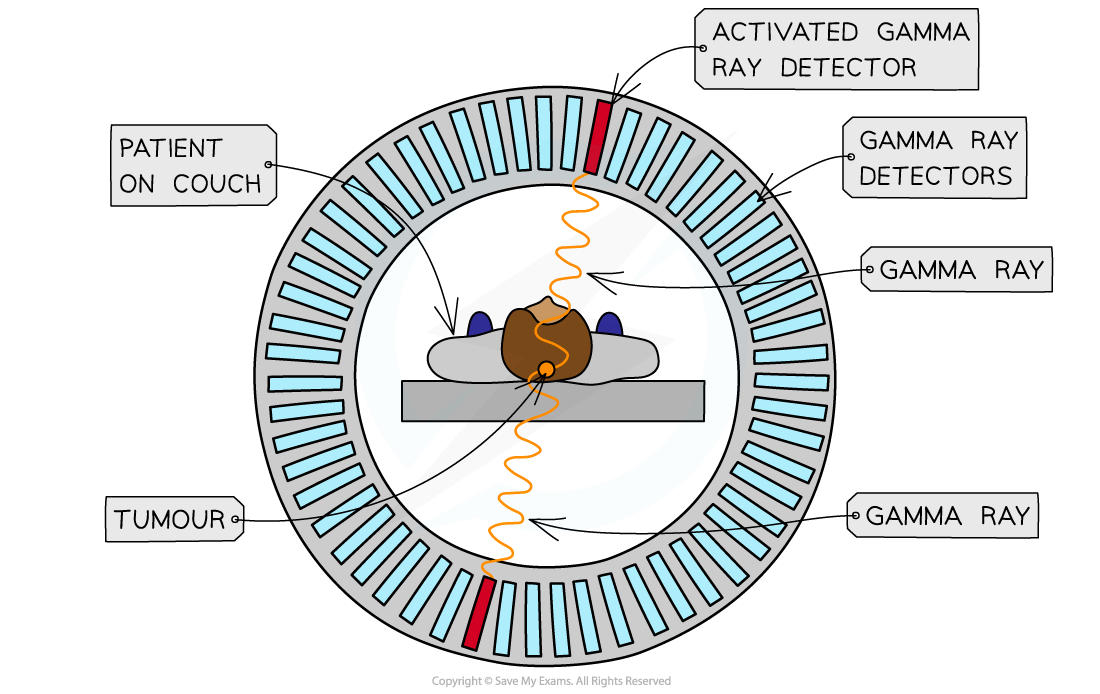Detecting Gamma-Rays from PET Scanning
- The patient lays stationary in a tube surrounded by a ring of detectors
- Images of slices of the body can be taken to show the position of the radioactive tracers
- The detector consists of two parts:
- Crystal Scintillator – when the gamma-ray (γ-ray) photon is incident on a crystal, an electron in the crystal is excited to a higher energy state
- As the excited electron travels through the crystal, it excites more electrons
- When the excited electrons move back down to their original state, the lost energy is transmitted as visible light photons
- Photomultiplier -The photons produced by the scintillator are very faint, so they need to be amplified and converted to an electrical signal by a photomultiplier tube

Detecting gamma rays with a PET scanner
Creating an Image from PET Scanning
- The γ rays travel in straight lines in opposite directions when formed from a positron-electron annihilation
- This happens in order to conserve momentum
- They hit the detectors in a line – known as the line of response
- The tracers will emit lots of γ rays simultaneously, and the computers will use this information to create an image
- The more photons from a particular point, the more tracer that is present in the tissue being studied, and this will appear as a bright point on the image
- An image of the tracer concentration in the tissue can be created by processing the arrival times of the gamma-ray photons






